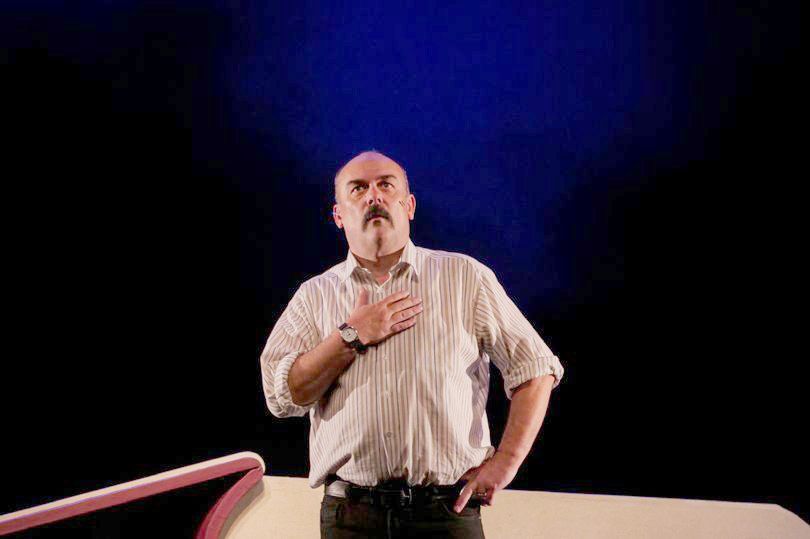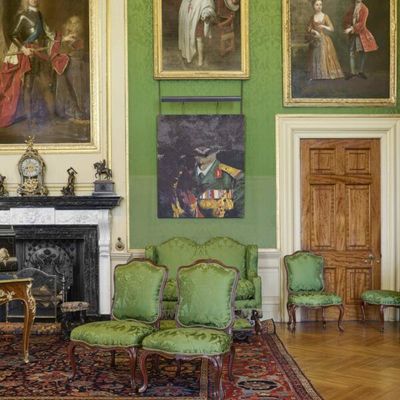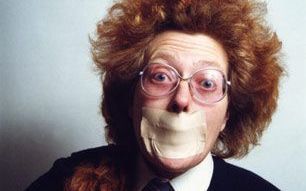WHAT unique role does visual art have at this point in 'post-conflict' Belfast? This is the question I added to the action plan of the Artists' Newsletter Assembly sessions.
The group on the second day was reduced, perhaps wondering perhaps just what one more action plan might contribute to? Another report on a shelf to gather dust? But Dr Cherie Driver of the Belfast School of Art put us through our paces, picking out observations on everyone's input.
The title of the sessions is 'Who cares about artists in Belfast?' "My Mum," replied someone. "People with no money," another wit replied. "Actually, my mum does not care at all," said another.
While the majority of the gathered visual artists were under under forty and not representative of the vast intergenerational body of artists working in the city, it was interesting to hear everyone's perspective. The South of Ireland currently has a pilot basic income for the arts scheme. The artist coming up to talk about his experience did not give anyone much hope, saying his immediate reaction on receiving the €350 a week was 'Great, I don't have to do any work now.' On this policy I think it's best to wait and see the results, although there was a feeling that it would not be extended by a new government, being too neoliberal an economic policy for some.
While everyone was invited to input their thoughts at different tables. my table attracted some of the few older people in attendance. In many ways this was positive and as we inputted our points of view it was clear that for some, they did not want to have anything to do with this kind of visual art, as they did not feel that their day-to-day lives were affected in any way by our current political situation, or that they had any role in helping to change things. On an external, obvious level we have the re-imaging of many murals across the city, which has changed the atmosphere of different areas; or on the International Wall, giving space to issues as they occur. This with a new set of murals brought on my the 'Hit the North' festival, which has become an increased tourism pull.
Then there are the exhibitions that fit in the Colin Davidson Silent Testimony section, curated by Kim Mawhinney and currently finishing a run at the Irish Art Centre in New York. The large portraits of victims of the Troubles have touched on the large societal trauma body in our wider society. The exhibition was explained by Dr Cherie Driver as an "empathetic encounter" where the process of visiting the exhibition has released something unprocessed by the visitor.
Last chance to view #SilentTestimony is 1-5pm today & 1-3pm tomorrow. Click below to hear curator @Kim_Mawhinney discuss @colin_davidson's portraits of 18 people connected by experiences of loss during the Troubles. Free admission > https://t.co/9PcfNdXdKv https://t.co/N7iss1MJy4
— Irish Arts Center (@IrishArtsCenter) October 7, 2023
Visual art can be about a redistribution of ideas, giving hope, shifting the dynamic of disenfranchised communities, giving voices to the voiceless. One Council employee in attendance suggested that it should be challenging for wellbeing and healing, inclusion and integration. "That's very interesting," was my reply as I have personally been refused support for having the word 'healing' in a proposal, the feedback stating that "It's not in the Council strategy." I did look and it's not. So what's going on? How is it that in a city of so much trauma healing can be omitted?
There was some discussion about instramentalised art – the community art of part of our city. Yet there is another step which is being ignored – that of the contemporary art underpinned with art therapy. Or simply art therapy.
There was some discussion of making sure that artists working in communities are not just dancing on other people's trauma. It was also noted that it's great to include our newcomer communities bringing life and diversity; but also it's important not to leave out families who have struggled in the city for generations because they are perceived as harder to reach.
Meanwhile, Greenshoots Productions have been staging a number of community outreach events attached to Beano Niblock's The Man Who Swallowed a Dictionary. Supported by the Community Relations Council, the 'Have ou ever thought of writing a play?' event was well attended, with Rosemary Jenkinson, Beano and Martin Lynch giving hints and tips on how they started out. In 'What's next in loyalist politics?' held in Ballybeen, the former politically motivated political prisoners who attended and the rest of the audience were spellbound when Paul Garrett – who plays David Ervine in the play – stood up and acted the scene when he joins the UVF. The woman beside me said she felt like it was really happening and she was witnessing it.
The panel of was pretty interesting. Emma Shaw could stand up to Jamie Bryson and it was worth going to to hear Martin Lynch say he was distressed to see a young man dressed in a shirt and tie being so conservative – that when he was that age it was socialism that fired his imagination. it was well chaired by Martin Snoddon and the opportunity to say anything you like from the audience would have made Ian Paisley turn in his grave.
One man said he had no problem with there being more Catholics in Northern Ireland because it's about sharing. Another spoke of the power of the unions. Andrew McCormick from the Green Party came out as a lapsed Catholic who was brought up in the New Lodge. He explained that in other parts of the city people and communities are being helped with applications that transform communities and it did not seem to be happening in Ballybeen. Jamie Bryson spoke of the need for more loyalist women to take up the microphone while Emma Shaw agreed, but added men need to support them and not just slag them off.
@GreenShootNI outreach with The man who swallowed a dictionary #thursdaynight a lively panel pic.twitter.com/MVjiiZfZUs
— Bronagh Lawson (@CreativChangeNI) October 12, 2023
My question was 'How do you think the arts can help bring out the creativity of the loyalist people?' as for years I've been told 'Here, love, no, we are just not interested.' Emma Shaw said there was a fear about what art will be produced and what artists will say about the community.
Greenshoots and Beano's play have been once again shown the power of the arts and while the panel may not have totally understood why, it was the reason the evening was such a success.







